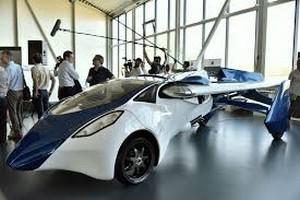Flying carsFlying cars: automating the skies means playing with our lives
Recent research suggests that flying cars could eventually be a sustainable way to free up roads. The first models are set to hit our skies in 2019 as personal playthings, while industry sees them as taxis and commuter vehicles of the future. But as Harry Potter’s encounter with the Whomping Whillow reminds us, flying cars can be dangerous. Before futuristic visions of three-dimensional sprawling city traffic can approach reality, there are some serious safety issues that need addressing.

Author Johnathan Aitken
Recent research suggests that flying cars could eventually be a sustainable way to free up roads. The first models are set to hit our skies in 2019 as personal playthings, while industry sees them as taxis and commuter vehicles of the future. But as Harry Potter’s encounter with the Whomping Whillow reminds us, flying cars can be dangerous. Before futuristic visions of three-dimensional sprawling city traffic can approach reality, there are some serious safety issues that need addressing. Navigating the skies
The aviation industry is risk averse, and understandably so. Accidents in the air tend to have much more severe consequences than those on tarmac. Obtaining a pilot’s licence for small aircraft is therefore a rigorous, time consuming, and costly process. For this reason, large-scale flying car operations are likely to be automated – and that means relying on GPS.
Whilst GPS is usually a reliable technology, it is fallible. Susceptible to signal jamming and easily interrupted by atmospheric conditions, current aviation regulations prohibit it from being used as primary means for navigation.
Automated road cars use infrared laser technology (LIDAR) to support GPS data, scanning the environment to calculate the distance to nearby objects. However, such technology currently only reliably functions up to 100 metres away. This isn’t a problem on roads, which have many nearby features enabling quick relocalisation when the GPS signal cuts out. But the aerial environment isn’t littered with crossroads or traffic lights. Research is underway to develop LIDAR capable of detecting objects further afield, it is by no means certain that this could ever be available at a cost-effective price.
Even if static objects could be reliably detected, finding a way to safely weave through the moving ones remains a significant research problem. Automatic dependent surveillance–broadcast (ADS-B) technology allows aircraft to inform each other of their position, but aircraft such as gliders and microlights operate without power and so cannot use such systems.
Commercial traffic flies in pre-defined air corridors at high altitudes, avoiding the chaos below. Flying cars, on the other hand, would operate at the same lower altitude band as light aircraft, where route planning is much freer.
